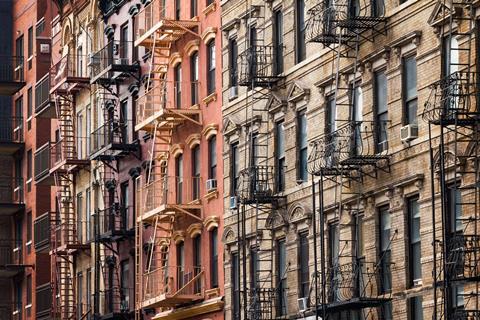New York City’s real estate moguls are reeling from the worst political defeat in their history.

Last month, legislators in the state capital of Albany rolled back a slow-but-steady campaign by the property industry to loosen residential rent regulations.
The new laws, which left developers and landlords in a state of shock, give tenants an unprecedented upper hand in such matters as eviction disputes. Most importantly, they make it almost impossible for landlords to remove apartments from rent-regulated status to market rate and severely limit how much they can raise rents based on capital improvements.
The ramifications are profound in New York, where companies struggle to lure talent and where affordable housing is scarce. While the new law’s advocates naturally say it is a great step to protect tenants, the reality is that it is likely to discourage new development and have the effect of making apartments that are not regulated even more expensive.
The emotions generated by apartment rent issues in New York City cannot be overstated. Despite fascination over $50m (£40m) condos bought by celebrities who rarely occupy them, New York is mainly a city of renters. They account for 65% of all dwellings.
The city’s apartments look the same from the outside: blocks and blocks of apartment buildings in every shape and size. But behind the facades exists a crazy quilt of lease prices, not only from building to building but usually within the same one. Tenants in one two-bedroom unit might pay $7,000 a month; in a different but similar unit, $2,500.
The reasons have to do with regulations that were first locked into place as an emergency measure after the Second World War. Rent control, which is cheapest, applies to small buildings constructed before 1947 and where a tenant or family member has lived since at least July 1971.
Fortunate few
Although relatively few survive – a mere 22,000 – they’re the stuff of local lore. Landlords seize upon a handful of notorious abuses as proof that the system coddles a fortunate few at owners’ expense.
But the main battle ground is over ‘stabilisation’, a much larger category that affects some 1.26 million rental homes, compared with 937,000 unregulated ones. Stabilisation mainly covers buildings constructed between 1947 and 1974 and newer buildings that got tax breaks for including affordable units. A city rent-guidelines panel approves annual hikes on stabilised units – typically below 5%, most recently, 1.5% increases for one-year leases and 2.5% for two-year leases.
Since 1993, landlords managed to legally remove 155,000 units from regulated status. Although a relatively small percentage of the total, it was widely seen as leading to eventual total deregulation. Apartments could be converted to market rate once thresholds for tenants’ incomes and an apartment’s rent were breached.

Now the trickle of removals from rent caps has been completely stopped up. Apartment building owners and developers called the vote, led by Democratic Party lawmakers, a death blow to their ability to maintain their properties and to build new ones. Making rent regulation essentially permanent means that tenants who enjoy below-market prices will have even less reason to move, thus tightening the unregulated market and driving up costs for everyone else.
The decisions reflected a leftist turn by the state and city electorates that staggered real estate moguls who were long accustomed to getting their way.
President of the Real Estate Board of New York lobbying organisation John H Banks called the change “a disaster for New York City”. Coincidentally or not, Banks resigned his position last week — possibly because group members blamed him for losing the fight. Meanwhile, two landlord groups, the Rent Stabilisation Association and the Community Housing Improvement Programme, began preparing a federal lawsuit over the changes based on what they called unconstitutional “taking of property”.
The residential caps also raised fears that proposals for commercial-realm regulations, once regarded as a remote possibility, might not be so far-fetched. Some members of the New York City Council want to impose various forms of rent control on owners of retail properties and even of office buildings.
Their campaign might go nowhere. Even ultra-liberal mayor Bill de Blasio has expressed misgivings. But nobody thought that residential regulations might be immortalised – until last month.
Steve Cuozzo is a real estate columnist and contributor to the New York Post





























No comments yet